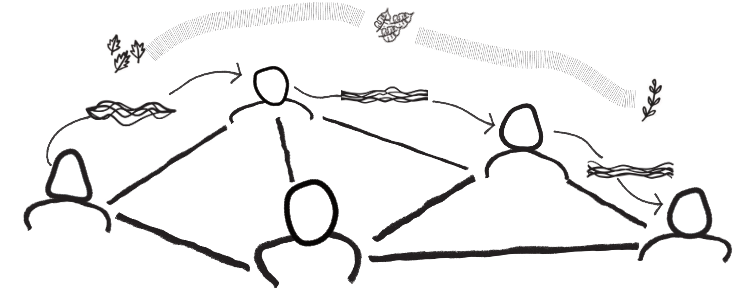
People—Stories—Ideas
I am a researcher focused on exploring how people create worlds through ideas embedded in stories. All of us live, work, and play in multiple groups. We carry ideas from one group to another, and those ideas transit through us, sometimes circumnavigating the world in the process. Understanding this process is at the heart of narrative intelligence.
Updates
For those interested, I am now blogging on Medium and microblogging on Mastodon. Almost everything else should be here, or will be shortly. Drop me a note in the fediverse if there’s something here you want.
Spring 2024’s Introduction to Text Analytics was the first of its kind at UL-Lafayette. Next up is the first course on Narrative Games in Fall 2024. (See this log entry for brief course descriptions.)
Digital Folklore Podcast Interview: I was interviewed by Perry Carpenter and Mason Amadeus of the Digital Folklore podcast and it was a blast! We had a wide-ranging conversation and they ended up pairing me with Lev Gorelov for their episode on “Statistically Conscious (Artificial Intelligence)”.
Data Sources Updated: If you’ve asked about sources for cultural data, that list has been updated.
About Me
My research focuses on computational models of discourse, especially narratives and how they cascade through socio-cultural networks. In over 50 peer-reviewed publications I have examined how ideas are embedded in narrative (), how narratives are transformed by networks (), and how narratives and the ideas they contain create social realities () as well as economic opportunities (2016).
In addition to my published work in academic journals and edited volumes (some of which have been translated into Chinese and French), I have been cited or interviewed in newspapers like the New York Times, the L.A. Times, and The Philadelphia Inquirer as well as public television documentaries and podcasts. I have been a Jacob K. Javits Fellow, a MacArthur Scholar, a fellow at the EVIA Digital Archive, a fellow with the Institute on Network Studies in the Humanities, and a senior researcher at UCLA’s Institute for Pure and Applied Mathematics.
I am currently a professor at UL-Lafayette, where I teach courses on folklore, digital culture(s), text analytics, and game studies. I have served as a major advisor to students pursuing PhDs and MAs in folklore studies, literary studies, creative writing, Francophone studies, and architecture.
During a two-year leave of absence in 2020–2022, I was a professor of social informatics with the U.S. Army’s TRADOC. I was part of a team that developed a curriculum and a course for senior civilian and military leaders on the role that human information systems play in Information Advantage (IA) and Multi-Domain Operations (MDO). I also helped revise ADP 3-13 Information.
\